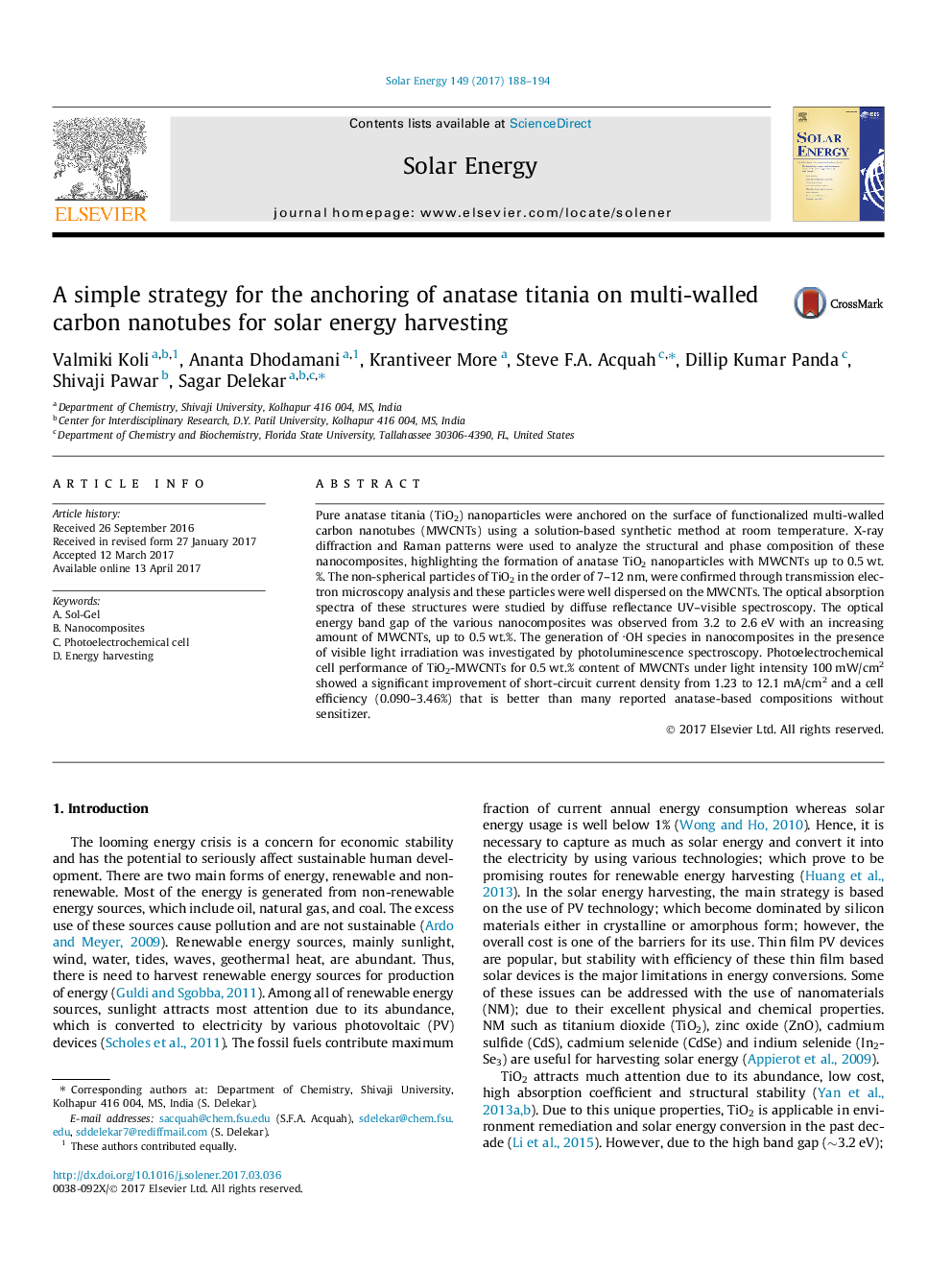| Article ID | Journal | Published Year | Pages | File Type |
|---|---|---|---|---|
| 5451080 | Solar Energy | 2017 | 7 Pages |
Abstract
Pure anatase titania (TiO2) nanoparticles were anchored on the surface of functionalized multi-walled carbon nanotubes (MWCNTs) using a solution-based synthetic method at room temperature. X-ray diffraction and Raman patterns were used to analyze the structural and phase composition of these nanocomposites, highlighting the formation of anatase TiO2 nanoparticles with MWCNTs up to 0.5Â wt.%. The non-spherical particles of TiO2 in the order of 7-12Â nm, were confirmed through transmission electron microscopy analysis and these particles were well dispersed on the MWCNTs. The optical absorption spectra of these structures were studied by diffuse reflectance UV-visible spectroscopy. The optical energy band gap of the various nanocomposites was observed from 3.2 to 2.6Â eV with an increasing amount of MWCNTs, up to 0.5Â wt.%. The generation of OH species in nanocomposites in the presence of visible light irradiation was investigated by photoluminescence spectroscopy. Photoelectrochemical cell performance of TiO2-MWCNTs for 0.5Â wt.% content of MWCNTs under light intensity 100Â mW/cm2 showed a significant improvement of short-circuit current density from 1.23 to 12.1Â mA/cm2 and a cell efficiency (0.090-3.46%) that is better than many reported anatase-based compositions without sensitizer.
Keywords
Related Topics
Physical Sciences and Engineering
Energy
Renewable Energy, Sustainability and the Environment
Authors
Valmiki Koli, Ananta Dhodamani, Krantiveer More, Steve F.A. Acquah, Dillip Kumar Panda, Shivaji Pawar, Sagar Delekar,
